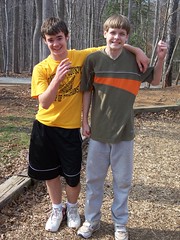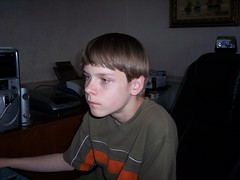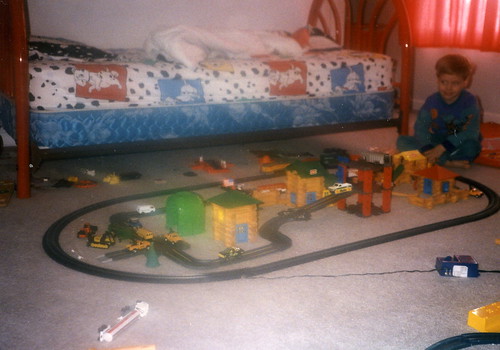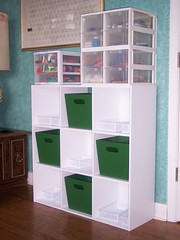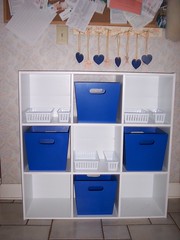Susan at Imperfect Genius started a homeschooling meme that I thought I would get in on . . .
1) What country/region/state do you live in?
North Carolina, for the past six years.
2) How long have you been homeschooling? Just getting started, old pro or somewhere in between?
Hhhmmm, “old pro” implies that you know what you’re doing, and I can’t say that. In fact, one of the joys, to me, of homeschooling is that because it is so individual, or that’s how we do things, and every individual goes through different stages, nothing is ever stagnant. It’s always evolving with the individual, so our homeschooling is always evolving. And, just when I think I figured out what one child needs for one stage, he/she changes. Drat!
But, in the traditional sense of things, I officially put on the cloak of homeschooler in 1992. However, when I came to homeschooling, I was searching for a way to continue what had been working for us since our first child’s birth, so I would say we’ve been living the lifestyle of a homeschooler since 1987.
3) Write a little something about your family. Ages? Stages?
Eric is 19 and is at the transitioning stage. He enjoys everything Japanese, manga, video/computer games, designing costumes (which he’s thinking about majoring in), and drawing.
Abbey is 17 and has achieved the gift-focus stage and is entering her transitioning stage. She enjoys writing (she says it’s now like breathing . . . if she doesn’t write, she’ll die . . . although it sounds high drama, which is not like her at all, it is more poetic, which is more her genre), her animals (all 12 of them), and computer creativity (designing CD covers, her website, or making digital movies).
Eli is 15 and is solidly in the gift-focus stage. He loves computer programming, computer games, math (yes, he does this for fun!), and piano. He used to spend hours building with Legos and Technics, robotics and stop-gap action movies, but has evolved.
Adam is 13 and is bordering between the collaborative learning stage and the gift-focus stage. It should be interesting this next year. He loves to watch movies, play video games, play computer arcade games, and reading.
Alex is 11 and has entered the collaborative learning stage. He has just been learning how to assemble ceiling fans himself that he buys from his earned money as his interest in ceiling fans continues, enjoys watching installation videos for garage doors and openers, watching movies, and his interest in reading has taken off with his enjoyment of Junie B. Jones, which is definitely his humor style.
William is 7 and is bordering on leaving the learning style discovery stage and going into the exploration stage. He loves bugs, swords, action figures (particularly The Lord of the Rings and Star Wars), and always creating costumes for and being in “character”.
Joseph is 5 and has finally left the temperament stage and is into the learning style discovery stage. He is a HUGE Daddy’s boy and will work outside with dad all day if daddy will be with him. He loves John Deere, tractors, construction vehicles and gardening tools. Yesterday, Daddy finally just let him mow the grass with the push mower because he was so determined. He did great!
4) Share some good homeschooling advice you’ve run across.
When your children ask you for help, don’t turn it into a lesson.
5) Tell us something you’re passionate about (besides your family and homeschooling, those are givens!).
Although this has to do with both, I truly am passionate about learning styles. It is absolutely fascinating to me. If the “stages” I talked about above intrigue you, I intend to write about it soon. It’s my own version of what I noticed my children’s natural learning paths encompassed, if you want to put it to “stages”.
Reading is something I’ve always enjoyed, but am very careful doing so because I will not do anything else, including being with my family 🙂 From time to time, I will also pick up some stitching such as knitting, crocheting, cross stitch . . . not sewing . . . don’t know how.
6) If you could take the ultimate field trip, where would you go and why?
A chocolate factory . . . with free samples! LOL!
7) What is a resource you can’t do without?
All of our books, without question.There are several natural ways to click this (buy viagra) stop aging by improving lifestyle, following anti-aging diet and taking anti-aging supplements.
The computer!
Now that we have a nice scanner/copier/printer . . . gotta love it!
8) How do you homeschool? Classical, Charlotte Mason, Waldorf, Unschooling, Eclectic?
We most identify with unschooling, but I would self describe our learning lives as collaborative learning and strength-based learning.
9) Share a website or two that you visit often – can be your favorite blogger or a curriculum supplier, just any sites you really like.
I wish I could get a lot more stuff at Different Roads to Learning.
I like Love to Learn.
10) Tell us about one of your favorite projects/activities/trips you’ve had in the past few months.
It was more than a few months ago, but the family vacation to Disney World we literally organized in 24 hours back in February was absolutely priceless for family togetherness. As the children were getting older and our lives were filling a bit more up with stress, we chose to go into the trip with absolutely no expectations and came away with renewed unity and bonding. Wonderful memories for everyone! Can’t beat that!
11) What is a current/previous homeschooling challenge you’ve faced?
I lost the person who was helping me help William learn because of her personal family needs and he really needs to have someone commit to using his learning method to learn to identify his alphabet starting this summer which takes a lot of time and commitment. Basically, I’m going to try to implement better time management skills in my own life, and to start using a flexible schedule for myself again, in order that I might be able to accomplish this myself. Well, let’s put it this way, I HAVE to make this work!
12) Share an accomplishment, something about you or your children. Come on, brag about it!
There are always personal victories for each of my children from Adam being able to independently make his own peanut butter and jelly sandwiches to Alex buying and assembling his own ceiling fan to Eli being asked to play piano for a regional conference (so others are hearing about his talents and requesting him) to Abbey being selected to play her ocarina for a talent show (through a selection process) and also placing second for her poem she submitted to Joseph coming home from church today not having been kicked out of his class, again, for his hyperactivity differences.
13) What are you looking forward to over the coming year?
Instead of “stealing time” here and there, I’ve carved out specific time each day for me to devote a segment of my energy toward an on-line business which combines with my desire to “give back” both to society and my family.
14) Name three things you like doing in the summer with your family.
Doing family things together outside near dusk and into the dark hours.
Riding bikes.
Swimming.
15) Have a favorite homeschooling quote? Share it here.
The Animal School, the version as shared by Stephanie at Throwing Marshmallows.

